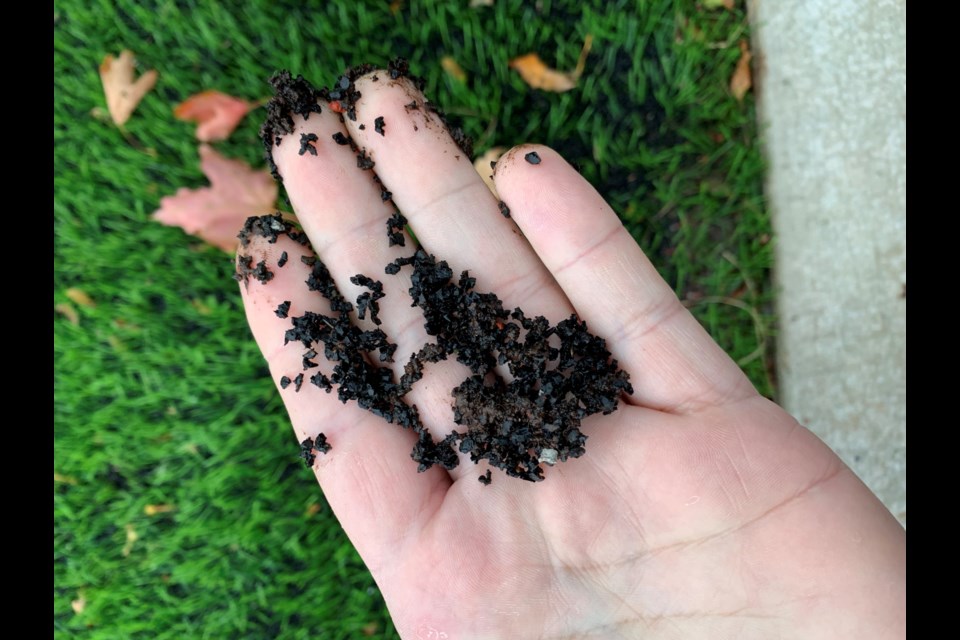Over the decades, Algoma Steel had accumulated so many used tires, they weighed a combined total of 850 tonnes – the equivalent of seven adult blue whales.
They took up a lot of space and a huge environmental footprint, so last fall, the Sault Ste. Marie steelmaker decided to dispose of them once and for all.
Teaming up with eTracks Tire Management Systems, Algoma Steel has started to have the tires removed and brought to recycling facilities across the province where they’ll be disassembled, cut up and repurposed.
“It is important for us to deal with our legacy tires in an environmentally responsible manner,” said Fred Post, Algoma Steel’s environmental control manager, in a news release.
“ETracks has made that possible, ensuring that our tires get recycled safely and responsibly.”
In the 1990s, Algoma Steel implemented a one-in, one-out policy: for every new tire brought into the operation, an old one had to be recycled. But many of the tires stockpiled from the company’s 118-year history predate that time.
ETracks is the largest of several producer responsibility organizations (PROs) across the province. These non-profit organizations work with tire processors and haulers to manage and dispose of tires that have reached the end of their lives.
Want to read more stories about business in the North? Subscribe to our newsletter.
The work corresponds to new legislation introduced by the provincial government last year that assigns the responsibility for used tire disposal with the companies that put them into the Ontario market; namely, tire manufacturers, heavy equipment machine companies, automakers, and tire imports.
It’s called “individual producer responsibility,” said Steve Meldrum, CEO of eTracks, an Oakville-based organization, in an interview.
Tires can be collected at one of 6,000 collection sites across Ontario, or groups like eTracks can undertake special cleanup projects, like that at Algoma Steel.
“Algoma is absolutely, order of magnitude, bigger than any other project that we’ve engaged in,” Meldrum said.
“It’s the biggest project that we’ve had, and it’s been a lot of fun doing it, because it’s also just the right thing to do.”
The project is unprecedented both for its breadth and for the complexity involved.
Some of the tires are so massive – anywhere from three feet to 12 feet in diameter – they can’t fit on a regular truck bed, and so they have to be processed on site before they can be hauled away.
That includes removing any steel cable from the interiors and cutting them into manageable pieces, Meldrum said.
ETracks partners with 80 to 90 haulers across the province, including some in the North, that have the capacity to transport the tires.
They then go to large processors in areas like Ottawa and southwestern Ontario, which have processors that can handle the bigger tires, like those taken from earthmoving equipment, for example.
Meldrum said eTracks has worked on other big projects, removing tires from auto wreckers, racetracks, and farms.
In the North alone, an additional 318 tonnes of tires have been handled.
Recycled tires can be repurposed for a number of uses, among them synthetic turf for sports fields, playground safety pads, sports arena mats, comfort flooring for lifestock, rubberized asphalt, and padding in safety helmets.
Meldrum said it’s tough to put a value on the cost of the project, since it’s calculated on a per-tonne basis, and the full removal won’t be complete until June.
But he lauded Algoma Steel for taking on corporate responsibility and trying to do the right thing.
Cleaning up their tire footprint not only removes them safely from the environment, but it also helps offset the use of virgin material in manufacturing new products.
“I just think it’s a good news story,” Meldrum said. “It’s the spirit behind the new regulation, which is people being responsible for what they’ve contributed, and I’m just glad eTracks is a part of it.”




